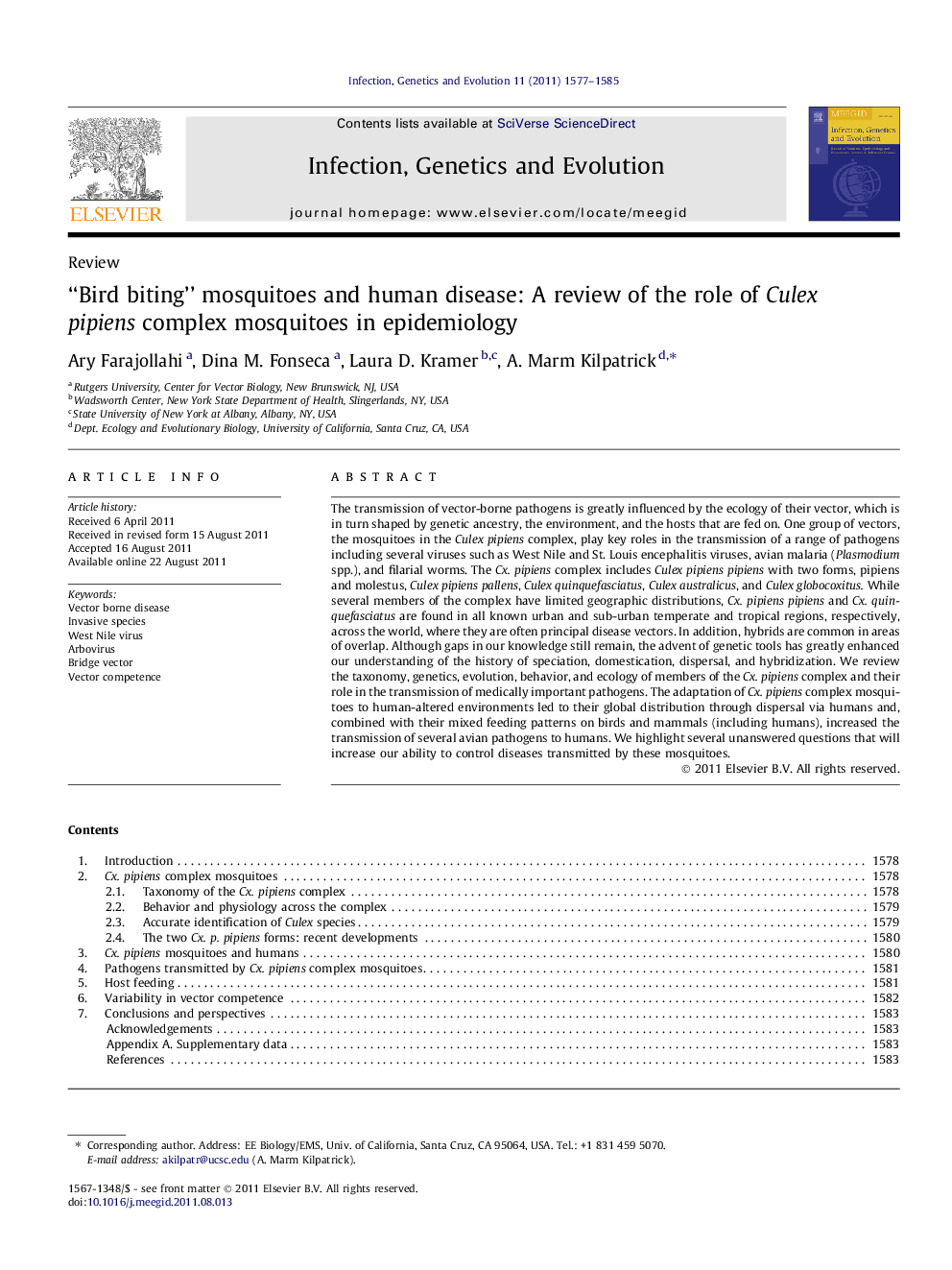| Article ID | Journal | Published Year | Pages | File Type |
|---|---|---|---|---|
| 5911554 | Infection, Genetics and Evolution | 2011 | 9 Pages |
The transmission of vector-borne pathogens is greatly influenced by the ecology of their vector, which is in turn shaped by genetic ancestry, the environment, and the hosts that are fed on. One group of vectors, the mosquitoes in the Culex pipiens complex, play key roles in the transmission of a range of pathogens including several viruses such as West Nile and St. Louis encephalitis viruses, avian malaria (Plasmodium spp.), and filarial worms. The Cx. pipiens complex includes Culex pipiens pipiens with two forms, pipiens and molestus, Culex pipiens pallens, Culex quinquefasciatus, Culex australicus, and Culex globocoxitus. While several members of the complex have limited geographic distributions, Cx. pipiens pipiens and Cx. quinquefasciatus are found in all known urban and sub-urban temperate and tropical regions, respectively, across the world, where they are often principal disease vectors. In addition, hybrids are common in areas of overlap. Although gaps in our knowledge still remain, the advent of genetic tools has greatly enhanced our understanding of the history of speciation, domestication, dispersal, and hybridization. We review the taxonomy, genetics, evolution, behavior, and ecology of members of the Cx. pipiens complex and their role in the transmission of medically important pathogens. The adaptation of Cx. pipiens complex mosquitoes to human-altered environments led to their global distribution through dispersal via humans and, combined with their mixed feeding patterns on birds and mammals (including humans), increased the transmission of several avian pathogens to humans. We highlight several unanswered questions that will increase our ability to control diseases transmitted by these mosquitoes.
⺠Mosquitoes in the Culex pipiens complex play key roles in pathogen transmission including arboviruses, Plasmodium spp., and filarial worms. ⺠The advent of genetic tools has greatly enhanced our understanding of the history of speciation, domestication, dispersal and hybridization. ⺠Adaptation of C. pipiens complex mosquitoes to human environments and hosts while predominantly feeding on birds increases zoonotic disease risk.
